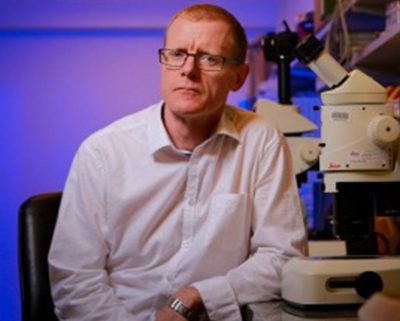Jamie receives 2018 ASBMB Lemberg Medal
This prestigious medal honours Professor Rossjohn’s significant and sustained contributions to the understanding of the molecular basis underpinning immunity.
Awarded annually, the Lemberg Medal is presented in memory of Emeritus Professor M.R. Lemberg, who was the Society’s first President and Honorary Member. Only three other scientists from Monash University have won this Medal. Professor Rossjohn joins the esteemed company of Professor Anthony Linnane (1973), Emeritus Professor Phillip Nagley (2001) and the Dean of the Faculty of Medicine, Nursing and Health Sciences and Academic Vice-President, Professor Christina Mitchell (2015).
“An outstanding team of researchers who work alongside me, coupled with the continuous and strong support of Monash University, have enabled numerous exciting finds in the area of immunity to be made over the last 15 years,” Professor Rossjohn said
Since his relocation to Monash in 2002 to pursue a program of research centred on structural immunology, Professor Rossjohn has focused on defining the key molecular interactions underlying receptor recognition events that underpin immunity, both from the aspect of protective immune control and with regard to autoimmunity. Such findings were in close collaboration with leaders in the field, including Professor James McCluskey from the University of Melbourne.
For example, Professor Rossjohn, alongside Professor McCluskey and Professor David Fairlie, provided a structural basis of how vitamin B metabolites can be presented by MR1 and recognised by Mucosal-associated T-cells (MAIT cells), thereby revealing an entirely new class of antigen in immunity.
Professor Rossjohn’s research on the immune system, how the body reacts to infection and what happens when the immune system fails has led to a sustained advancement of knowledge in the field of immunity. His work has been generously supported by the Anti-Cancer Council, the NHMRC, and the ARC, including the current Centre of Excellence in Advanced Molecular Imaging.
As the recipient of the 2018 ASBMB Lemberg Medal, Professor Rossjohn will attend the ComBio2018 conference in September to give the Lemberg Medal Lecture.
For more information about the 2018 ASBMB Lemberg Medal, see https://www.asbmb.org.au/awards/jamie-rossjohn/



